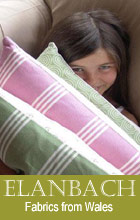St Davids Head (Welsh; Penmaen Dewi) is a headland in the Pembrokeshire Coast National Park, south west Wales.
Northwest of the cathedral city of St David's jutting into the Irish Sea, St Davids Head marks the southern extremity of the large Cardigan Bay. To the south are Whitesands Bay, Ramsey Sound and St Bride's Bay. The headland and its immediate hinterland are owned by the National Trust. The igneous rocks there are said to be the oldest in the country at six million years old.
Described in a Roman survey of the known world in AD140 as the 'Promontory of the Eight Perils' there are magnificent views in all directions. To the north, the wide expanse of the Irish Sea, to the west, the Bishops and Clerks rocks, to the south, Whitesands Bay to Ramsey Sound and Ramsey Island and to the east, the slopes of the large rocky outcrop know as Carn Llidi.
There are a number of ancient monuments showing signs of early occupation, including, an iron age cliff fort, prehistoric settlements, a prehistoric defensive wall, signs of various neolithic field sytems and Coetan Arthur (Arthur�s Quoit) burial chamber.
The headland can only be reached on foot along the coastal path, the nearest road ending at Whitesands Bay about a mile to the south-east.
In 1793 Sir Richard Cold Hoare said in his "Journal of a Tour of South Wales": "No place could ever be more suited to retirement, contemplation or Druidical mysteries, surrounded by inaccessible rock and open to a wide expanse of ocean. Nothing seems wanting but the thick impenetrable groves of oaks which have been thought concomitant to places of Druidical worship and which, from the exposed nature of this situation, would never, I think, have existed here even in former days."
The headland is abundant in wildflowers and wildlife and the waters around it provide a rich habitat for fish, grey seals and porpoises. A wide variety of seabirds and Peregrine Falcons are also to be seen. | 



